- Millipede
- Cockroaches
- Spiders
- Rat
- Bed Bugs
- Ants
- Flea
- Chigger
- Silver Fish
- Centipede
- Ear Wig
- Termite

Millipede
Millipedes are a group of arthropods that are characterised by having two pairs of jointed legs on most body segments; they are known scientifically as the class Diplopoda, the name derived from this feature. Each double-legged segment is a result of two single segments fused together.
Most millipedes have very elongated cylindrical or flattened bodies with more than 20 segments, while pill millipedes are shorter and can roll into a tight ball. Typically forest floor dwellers, they live in leaf litter, dead wood, or soil, with a preference for humid conditions. Millipedes generally have little impact on human economic or social well-being, especially in comparison with insects, although locally they can be a nuisance or agricultural pest.
Millipedes do not bite, and their defensive secretions are mostly harmless to humans — usually causing only minor discolouration on the skin — but the secretions of some tropical species may cause pain, itching, local erythema, edema, blisters, eczema, and occasionally cracked skin. Eye exposures to these secretions causes general irritation and potentially more severe effects such as conjunctivitis and keratitis. This is called millipede burn. First aid consists of flushing the area thoroughly with water; further treatment is aimed at relieving the local effects.
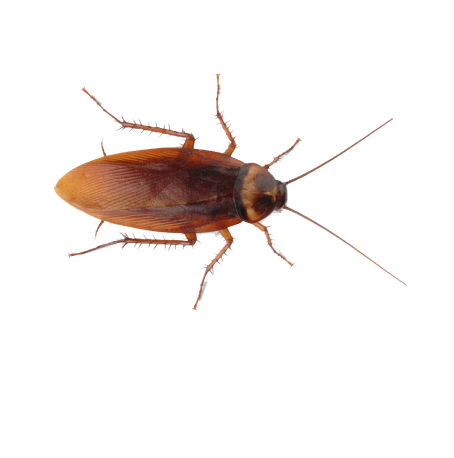
Roaches
Cockroaches, or roaches, form a group of insects within the Blattodea order, encompassing all members except termites. Out of the approximately 4,600 species of cockroaches, only about 30 are commonly found in human environments. Certain species are notorious pests. For instance, the German cockroach exhibits complex social behaviors, including communal sheltering and kin recognition.
Throughout history, cockroaches have been depicted negatively in human culture, often portrayed as unsanitary pests. Despite this perception, most species are harmless and inhabit various habitats worldwide. Cockroaches are incredibly resilient insects, capable of surviving for extended periods without food and thriving in resource-limited conditions. They commonly feed on human and pet food, emitting unpleasant odors, and can inadvertently carry harmful microbes, especially in places like hospitals.
Additionally, cockroaches are associated with allergic reactions in humans. Tropomyosin, a protein found in their bodies, can trigger allergies that cross-react with those caused by dust mites and shrimp, potentially leading to asthma. Some cockroach species can survive without food for up to a month, meaning their absence from sight in a home doesn’t guarantee their absence. Surprisingly, an estimated 20–48% of homes without visible cockroach signs still harbor detectable cockroach allergens in dust.

Spiders
Spiders, belonging to the order Araneae, are arthropods that breathe air and possess eight legs, fangs equipped with venomous capabilities, and spinnerets for silk production. They represent the largest group of arachnids and rank seventh in terms of species diversity among all organism orders. Spiders inhabit every continent except Antarctica, having adapted to nearly all terrestrial habitats.
Taxonomists have recorded 50,356 spider species in 132 families as of August 2022. Despite their widespread fear, only a handful of spider species pose a significant threat to humans. Spiders typically bite humans in self-defense, with most bites causing effects akin to mosquito bites or bee stings. Species like recluse spiders (Loxosceles) and widow spiders (Latrodectus) tend to flee and only bite when cornered, although accidental bites can occur.
Australian funnel-web spiders (Atracidae family) exhibit defensive behaviors such as fang displays. While their venom is seldom injected, it has been linked to 13 documented human deaths over 50 years. They have been labeled as the world’s most dangerous spiders based on clinical observations and venom toxicity, although this title has also been attributed to the Brazilian wandering spider (Phoneutria genus).

Rats
Rats are medium-sized rodents characterized by their long tails. While various rat species exist within the Rodentia order, the stereotypical rats belong to the Rattus genus. Other rat genera include Neotoma (pack rats), Bandicota (bandicoot rats), and Dipodomys (kangaroo rats). Typically, rats are distinguished from mice by their larger size. In general, if a muroid rodent is large, it’s referred to as a “rat,” whereas smaller ones are termed “mice.”
The terms “rat” and “mouse” lack taxonomic specificity. There are 56 recognized rat species worldwide. Among them, the black rat (Rattus rattus) and the brown rat (Rattus norvegicus) are the most familiar. These rats, known as Old World rats or true rats, originated in Asia. While rats are larger than most Old World mice, they typically weigh less than 500 grams (17+1⁄2 oz) in the wild.
Rats can act as zoonotic carriers for various pathogens, thereby contributing to disease spread. Diseases transmitted by rats include bubonic plague, Lassa fever, leptospirosis, and Hantavirus infection. Recent studies examining wastewater in New York City have suggested that rats could potentially harbor “cryptic” SARS-CoV-2 lineages, as unidentified viral RNA fragments in sewage match mutations previously associated with increased transmission in rodents.
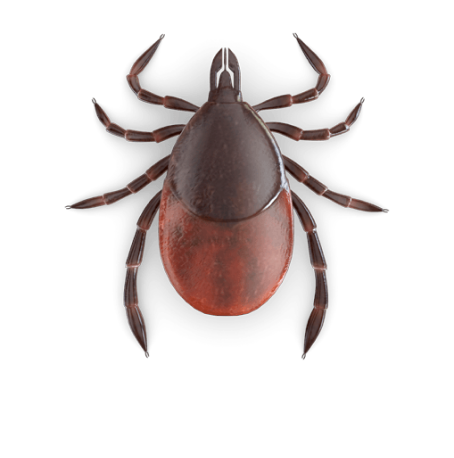
Bed Bugs
Bed bugs are small, blood-sucking insects that belong to the Cimicidae family. They are ectoparasites, meaning they live on the outside of their hosts, primarily humans, and feed on their blood. Bed bugs are found worldwide and are known for their ability to infest human habitats, particularly areas where people sleep, hence their name.
The common bed bug, scientifically known as Cimex lectularius, is the most well-known species of bed bug. Other species within the Cimicidae family also exist, though C. lectularius is the most prevalent and problematic for humans. Adult bed bugs are typically reddish-brown in color, oval-shaped, and about the size of an apple seed. They are nocturnal insects, preferring to feed on their hosts during the night and hide in cracks and crevices during the day.
Bed bugs are not known to transmit diseases to humans, but their bites can cause discomfort, itching, and allergic reactions in some individuals. Infestations can be challenging to eradicate, as bed bugs are resilient and can survive for several months without feeding. Their ability to hide in tiny cracks and crevices makes them difficult to detect and eliminate.

Ants
Ants are social insects belonging to the family Formicidae, known for their organized colonies and cooperative behavior. They can be found on every continent except Antarctica and play important roles in ecosystems as scavengers, predators, and seed dispersers. Ant colonies consist of various castes, including workers, soldiers, and a queen, each with specific roles and responsibilities.
The most common ant species encountered by humans are typically those belonging to the genera Formica, Camponotus, and Solenopsis. These ants vary in size, color, and behavior, but they all share the characteristic of living in highly structured societies. Ants communicate with each other using a combination of chemical signals, such as pheromones, and physical cues, allowing them to coordinate tasks efficiently.
While most ant species are harmless and play beneficial roles in ecosystems, some species can become pests when they invade human habitats in search of food, water, or shelter. These pests can contaminate food, damage structures, and even inflict painful bites in some cases. Common pest species include the Argentine ant, the odorous house ant, and various species of fire ants.

Flea
Fleas are tiny, wingless insects that belong to the order Siphonaptera. They are parasitic creatures that feed on the blood of mammals and birds. Fleas are known for their ability to jump long distances relative to their size, aided by specialized leg structures.
The most common species of flea encountered by humans is the cat flea (Ctenocephalides felis), which infests not only cats but also dogs and occasionally humans. Fleas can cause discomfort and irritation to their hosts through their bites, which often result in itchy, red welts.In addition to their biting behavior, fleas can transmit diseases and parasites, such as tapeworms, to their hosts.
Preventing flea infestations involves regular grooming and parasite prevention measures for pets, as well as keeping indoor environments clean and free of clutter. Regular vacuuming and washing pet bedding can help reduce the likelihood of flea infestations in the home.
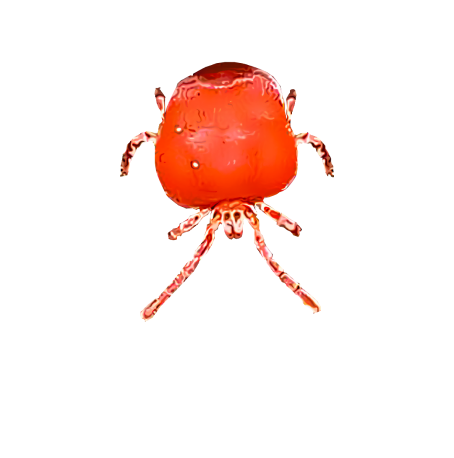
Chigger
Chiggers, also known as harvest mites or red bugs, are tiny arachnids belonging to the Trombiculidae family. These minuscule pests are typically found in grassy, wooded areas and thrive in warm, humid environments. While chiggers are most commonly encountered during the warmer months, they can be active year-round in temperate climates.
Chiggers are parasitic during their larval stage, feeding on the skin of humans and animals. Their bites can cause intense itching and discomfort, often resulting in red, swollen welts. Contrary to popular belief, chiggers do not burrow into the skin or suck blood; instead, they inject digestive enzymes that break down skin cells, allowing them to feed on the resulting fluids.
Chigger larvae are most often encountered in areas with dense vegetation, such as forests, fields, and tall grass. They tend to concentrate in warm, moist areas of the body, such as the ankles, waistline, and groin. After feeding, chigger larvae drop off their hosts to develop into nymphs and eventually mature into adults.

Silver Fish
Silverfish are small, wingless insects belonging to the order Zygentoma. They are characterized by their silvery-blue color and fish-like movements, hence their name. Silverfish are commonly found in homes and buildings, particularly in areas with high humidity levels, such as bathrooms, kitchens, and basements.
These pests feed on a variety of organic materials, including starches, sugars, and cellulose-based items like paper, glue, and textiles. They are particularly attracted to damp, dark environments and can often be found hiding in cracks, crevices, and behind baseboards.
While silverfish do not pose a direct threat to human health, they can cause damage to belongings and structures. They are known to chew through paper, fabric, and wallpaper, leading to unsightly holes and damage. Additionally, their presence can be indicative of underlying moisture issues in a home, which may need to be addressed to prevent further infestations
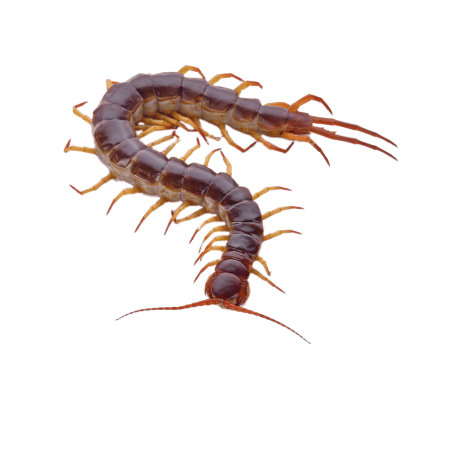
Centipede
Centipedes are elongated arthropods belonging to the class Chilopoda. They are characterized by their numerous legs, with each body segment typically bearing one pair of legs. Despite their name, centipedes do not have 100 legs; the number varies depending on the species, ranging from 30 to over 300 legs.
These carnivorous creatures are found worldwide, inhabiting a variety of environments, including forests, grasslands, and deserts. Centipedes are nocturnal predators, using their venomous fangs to capture and immobilize prey, which primarily consists of insects, spiders, and small invertebrates.
While centipedes may appear frightening due to their numerous legs and predatory nature, the vast majority of species are harmless to humans. In fact, centipedes play a beneficial role in ecosystems by controlling insect populations. However, some larger species of centipedes can deliver painful bites that may cause localized swelling and discomfort, though serious medical consequences are rare.

Earwig
Earwigs are small, nocturnal insects belonging to the order Dermaptera, characterized by their elongated bodies and distinctive pincers at the end of their abdomen. Despite their intimidating appearance, earwigs are generally harmless to humans and are not known to pose significant health risks.
These insects are omnivorous, feeding on a variety of organic matter, including plants, insects, and decaying organic material. While they primarily inhabit outdoor environments, such as gardens, flower beds, and mulch piles, earwigs may occasionally find their way indoors, seeking shelter and moisture.
Contrary to popular belief, earwigs do not enter human ears and do not lay eggs in the human brain. This myth likely stems from the insect’s name, which is thought to originate from the Old English word “earwicga,” meaning “ear beetle.
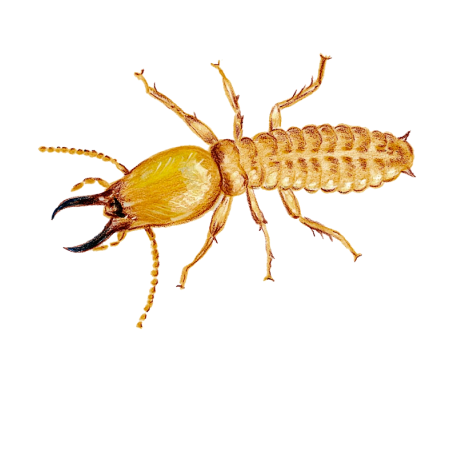
Termite
Termites are small insects belonging to the order Isoptera, known for their ability to cause significant damage to wooden structures. They feed on cellulose-based materials, including wood, paper, and cardboard, making them a common pest in homes and buildings.
Termite colonies are organized into castes, including workers, soldiers, and reproductive individuals. They typically reside underground or within structures, constructing elaborate tunnel systems to access food sources. Unfortunately, termite infestations are often discovered only after substantial damage has occurred, as these pests can remain hidden for long periods.
Given the potential for extensive property damage caused by termites, it’s crucial to address infestations promptly and effectively. Homeowners should also take steps to reduce conducive conditions for termites, such as minimizing moisture accumulation and removing wood-to-soil contact around the foundation of their homes.